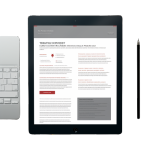
Revenue management is no longer just about setting the “right” price for a room. A solid framework integrates data-driven decisions, dynamic pricing, guest segmentation, and cross-departmental collaboration. Hotels that master this framework don’t just survive; they thrive.
This blog post examines the three critical components of a successful revenue management framework and provides practical advice for hoteliers who want to elevate profitability.
1. Market Segmentation and Demand Forecasting
Why It’s Critical
Revenue management begins by defining which guests you want to stay at your hotel, not just understanding who has already stayed there. The desired guest profile represents a vision and a goal for the property. Identifying these target guests directs pricing, marketing, and operational strategies.
Hoteliers must also determine whether these ideal guests travel to the destination year-round and across all days of the week. Understanding these travel patterns allows hotels to align their strategies with guest behavior. After defining the target audience, the next step is conducting a comprehensive analysis to assess whether these guests currently book at the property. A robust business intelligence tool is essential to effectively analyze guest behavior and booking patterns.
Micro-market Segmentation
Market segmentation combines multiple variables to create micro-segments, allowing hoteliers to tailor strategies more precisely. The segmentation process typically includes:
- Travel Reason: Business or leisure.
- Guest Origin: Domestic or international.
- Distribution Channel: OTAs, direct bookings, corporate contracts.
- Booking Behavior: Early planners, last-minute bookers.
- Length of Stay: Short-term vs. extended stays.
By combining these variables, hotels can identify micro-segments and analyze:
- Volume of bookings
- Average rates
- Total revenue per segment
- Customer acquisition costs
This analysis helps determine the most profitable micro-segments, guiding marketing and sales strategies to focus on high-value guests.
Demand Forecasting
Once the target audience is well-defined, forecasting demand becomes more accurate. Demand forecasting enables hoteliers to predict when target guests will visit based on:
- Seasonal demand patterns (high, shoulder, and low seasons)
- Weekly patterns (weekend vs. weekday stays)
- External influences such as holidays, local events, and weather conditions
Aligning pricing and operational plans with these insights allows hotels to capture maximum revenue during peak-demand periods while optimizing occupancy during low-demand periods.
How to Implement
- Conduct a thorough analysis of existing guest data using a robust business intelligence tool to compare the current customer base against the target audience.
- Set a base price based on the target audience’s willingness to pay, ensuring perceived value aligns with pricing.
- Adjust prices dynamically—raise rates during high demand to capture the full market value and reduce rates strategically during low demand to maintain occupancy.
- Align marketing and operational strategies around the target audience’s preferences, from personalized offers to curated guest experiences.
2. Not So Dynamic Pricing
Why It’s Critical
Every hotel should have a Revenue Management System (RMS). Setting and updating rates and availability has become more complex. Without automation, it’s impossible to follow the golden rule of revenue management: Set the right price at the right time and in the right channel.
However, not all dynamic pricing is created equal. Many RMS solutions follow a simplistic pattern: If there are rooms left to sell and no recent pickup, the system will lower the rate to find the market price at which bookings resume. While this approach may work for generic hotels, it can backfire for properties that have defined a specific target audience.
Lowering rates indiscriminately may attract guests outside the desired profile, potentially damaging the guest experience. Guests generally prefer staying in environments where they feel comfortable among similar travelers.
The Importance of a Tailored Pricing Strategy
Before implementing an RMS, it’s essential to:
- Define a pricing strategy that aligns with the target audience’s willingness to pay and perceived value.
- Communicate your strategy to the RMS vendor, ensuring the system is configured to reflect your unique positioning.
- Monitor and calibrate the system thoughtfully. Over-adjusting settings prevents the system from learning market patterns and limits effectiveness.
How to Implement
- Adopt a Revenue Management System (RMS) that enables dynamic pricing tailored to your target audience.
- Set pricing rules that prevent rate drops below thresholds that could alienate your desired guest segments.
- Monitor competitor rates but avoid reactive pricing that could trigger detrimental price wars.
- Optimize distribution channels by prioritizing those that align best with your target audience’s booking behaviors.
- Create value-driven packages (e.g., spa treatments, dining experiences, or excursions) that justify higher rates while enhancing total guest spend.
3. Cross-Departmental Collaboration and Profit Optimization
Why It’s Critical
Revenue management is most effective when all hotel departments align toward common goals. Success depends not only on optimizing room revenue but also on maximizing total guest revenue and overall profitability. Shifting the focus from capacity utilization to guest satisfaction fosters long-term success by enhancing guest experiences, online reviews, and repeat business.
Collaboration between departments—including marketing, sales, front desk, housekeeping, and F&B—ensures revenue strategies align with service delivery. By measuring Total Revenue Per Guest and Flow-Through instead of only traditional room revenue metrics, hotels can enhance overall financial performance.
How to Implement
- Conduct cross-departmental revenue meetings to align pricing, promotions, and service strategies.
- Set profitability-focused KPIs that include total revenue, guest spending, and operational efficiency rather than just occupancy and RevPAR.
- Integrate marketing strategies with revenue goals by promoting high-margin services, such as premium packages and exclusive experiences.
- Train all staff to recognize revenue opportunities through upselling, personalized guest recommendations, or optimizing operational efficiencies.
- Hold regular revenue strategy meetings with all department heads.
- Establish department-specific KPIs linked to the hotel’s overall profitability goals.
- Align marketing campaigns with high-margin opportunities, such as promoting profitable packages during low-demand periods.
Final Thoughts: The Path to Sustainable Hotel Profitability
Implementing a comprehensive revenue management framework is not just about pricing—it’s about strategic alignment across departments to drive profitability, enhance guest experiences, and ensure long-term success. A well-structured framework that integrates targeted market segmentation, intelligent pricing strategies, and seamless collaboration allows hoteliers to make informed decisions that boost revenue and optimize operations.
Key Takeaways for Hoteliers
- Define and attract the right guests. Ensure that your pricing and marketing strategies align with your target audience’s reasons for traveling to the destination, booking behaviors, and willingness to pay.
- Adopt an intelligent pricing strategy—use dynamic pricing models that reflect real-time demand while maintaining brand positioning and profitability.
- Maximize revenue through cross-departmental collaboration. Align all hotel departments to enhance guest satisfaction and increase total revenue per guest.
- Leverage data and technology—utilize a business intelligence tool to continuously track and analyze guest patterns, forecast demand, and refine revenue strategies.
By implementing these strategies, hoteliers can future-proof their business, increase revenue streams, and create a competitive edge.
The time to optimize your revenue management approach is now—are you ready to take the next step?






